I have driven pass the National Trust property Hinton Ampner many times on my travels from A to B. Yesterday I had the time and opportunity to call in, this was another NT garden I could cross off my list.
The NT website describe the gardens as follows:
“Beautifully manicured lawns lead the eye down avenues of sculptured topiary, past borders full of the heady scent of roses, to breathtaking views across the South Downs.”

Limited to time I only walked around the garden. I’m more a garden than a house visitor.

Hinton Ampner’s history goes back about 700 years, and the house was rebuilt and remodeled over the years. It suffered a large fire in 1960 and was rebuilt as it looked in the 1930’s.
We all have different agendas and expectations when garden visiting, I always hope to be inspired by design, color and planting suggestions.
Before I continue I want to make it clear that this is my own personal point of view, and one man’s meat is another man’s poison.
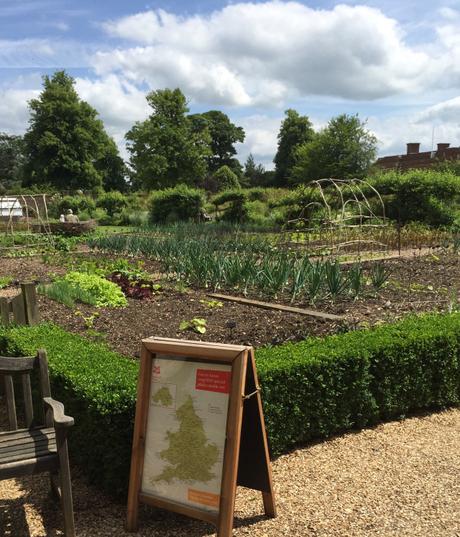
As you enter the garden the first thing you face is the large partly walled kitchen garden. I love kitchen gardens and was quite buoyed up with the thought this was going to be an interesting visit.
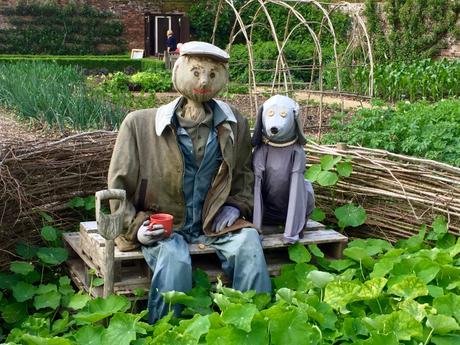
I found my way into the kitchen garden through the shop and a small entrance between tall trees. I loved the ‘One man and his dog’ scarecrow, which is a popular photo and I can see why, they are quite fun.
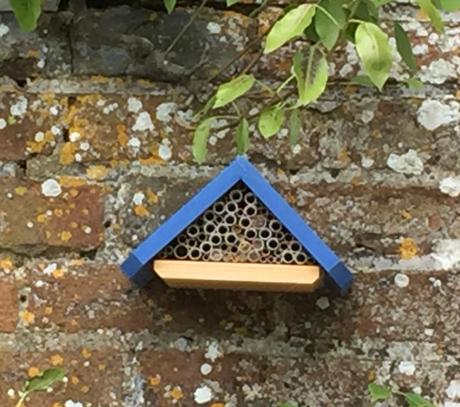
I couldn’t walk by this little insect house on the wall by the greenhouses without taking a pic.
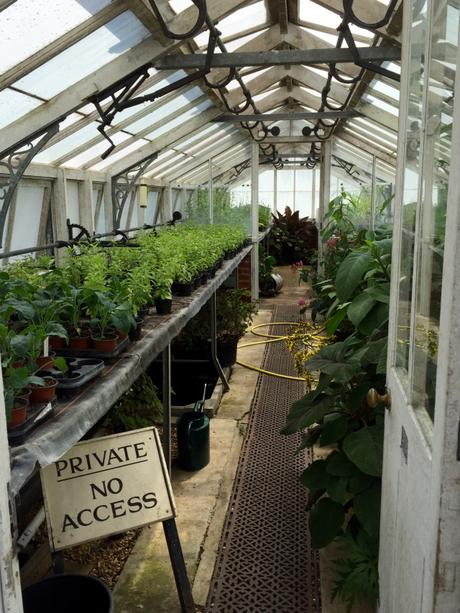
Greenhouses are a fascination to me. Only a peek at the door was on offer with this one.
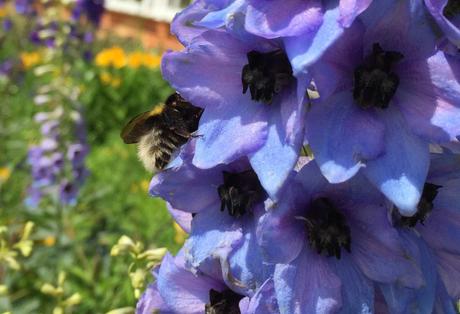
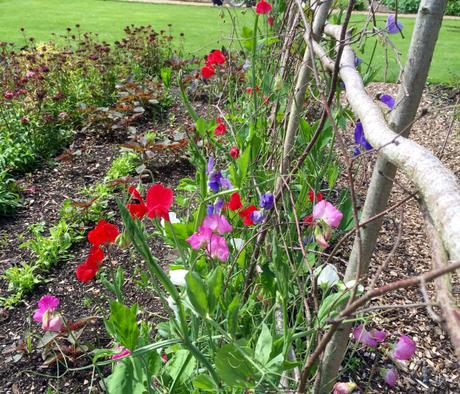
Anyone who gardens will sympathize with the peculiar weather we have had. It has had a tremendous effect on the growing season so maybe I am doing the gardeners at Hinton Ampner a great disservice. There seemed to be a lot of bare patches in the veg garden and only a few flowers, I am not sure if there is a dedicated cutting flower patch or just a few random flowers. The delphiniums were tall, strong and a magnificent blue, attracting lots of bees. The sweet peas, although quite short, were flowering well and I particularly liked the striking bright red, a color I’ve not seen before. I couldn’t see a label to tell me what variety they were.


Before my visit I read about Hinton Ampner on the NT website and read the plants in the garden have QR scanner plant labels. I thought this was a great idea and I downloaded a scanner app onto my iPhone.
To the side of the house there is a large bed of very pale pink, almost white, roses. I bent down with my iPhone and scanned the label. It told me they are called ‘Whiter Shade of Pale’. Unfortunately when I clicked on the URL nothing happened apart from a blank screen stating it was loading, I gave up after a while.

The views over the South Downs are, quite rightly, magnificent and I could hear sheep bleating in the distance. It certainly is a very tranquil English scene.

The blurb about the garden tells you it was created by Ralph Dutton (1898-1985) in 1930 and is an acknowledged masterpiece of 20th century garden design. I was disappointed with the vast expanse of lawn and narrow flower beds that edged it and had a “So what’s masterpiece about it” feeling and a sense of flatness.
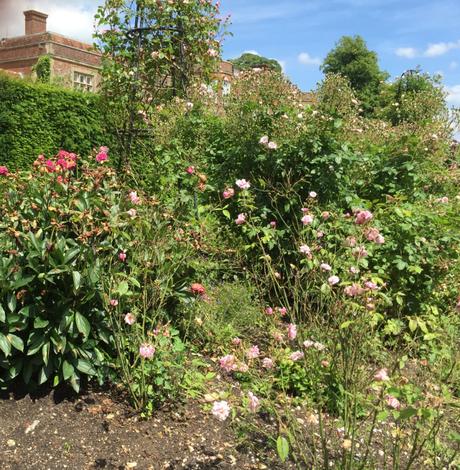

Going down steps you enter a series of rooms. The first is called The Long Walk and has beds packed with roses flanked by Yew trees.
It was sad to see the rain damage on the roses. I also wondered how much was rain damage and how much was they had been left, uncared for. Some of the roses had lost all their leaves and looked very straggly.
What was even sadder was that so many of the roses are hidden behind the trees. I find that quite puzzling and frankly more than a little strange. Why would you want to make it difficult to see the planting of something beautiful like a rose?

At the other end of the Long Walk is the Sunken Garden.
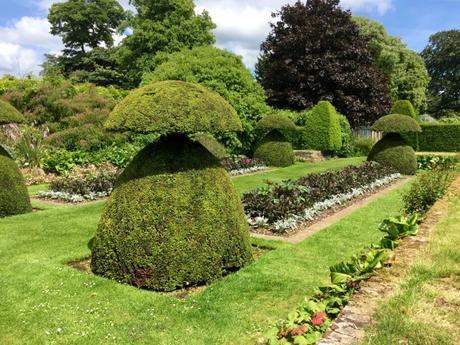

I am not a lover of topiary so these peculiar shaped bushes did nothing to endear me. Neither did the planting in the middle beds. A few dahlias were in flower and I could just imagine what it will look like shortly, a mass of bright pink, edged with silver cineraria with plant in the middle to give it height. I recognize the leaf but as I write this can’t remember the plant’s name. There were no QR scanner labels in these beds so no help there. I did notice the occasional plant label on the side borders of this garden room.
With 200 hectares of woodland and parkland and 4 miles of trails, there is a lot more to Hinton Ampner than the garden I saw. I came away with the impression that this is the draw for visitors. The National Trust advertise den building, tree climbing and wildwood camping for children and suggest families bring picnics to eat in the grounds. Had I come with my grandchildren and saw what fun they could have, I may well have left with a different feeling. As it is I wouldn’t visit again (without children anyway) and not a garden I, personally, would say was a must to visit. Sorry Hinton Ampner.

